- Home
- Outline
- History
- Facilities
- Video
- Organization
- Members
- Progress
- Joint Research
- Monograph list
- Access
Research Laboratory for Quantum Beam Science SANKEN, Osaka University |
||
|---|---|---|
We have 2 electron linacs, i.e. a 40 MeV L-band linac, an RF-Gun S-band linac, and three Co60 γ-ray sources as the representative facilities for joint use. |
||
| News ★JUMP to each year!2018 2017 2016 2015 2014・2013 ・ 2012・ 2011 | |
|---|---|
| Year of 2025 |
*Annual meeting of 2024 was held on April 25th.(program) |
| Year of 2024 |
*Annual meeting of 2023 was held on April 26th.(program) |
| Year of 2023 |
*Q-BASIS 2023 was held on April 24th-27th |
| Year of 2022 |
*Annual meeting of 2022 was held on March 10th.(program) *Joing meething of 2022 was held on January 20th.(program) |
| Year of 2021 |
*Annual meeting of 2021 was held on March 10th.(program) *Joing meething of 2021 was held on December 22nd.(program) |
| Year of 2020 |
*Annual meeting of 2020 was held on March 5th.(program) *98th Sanken technosalon was held on December 18th.(program) |
| Year of 2019 | *2nd Joint meeting was held on November 15th.(program) *1st Joint meeting was held on Octber 11th.(program) *Open facility,66 people came. (Icho festival was held on May 3rd.) |
*Annual meeting of 2018 was held on March 8th. *Joint meeting of 2018 was held on December 17th. *Open facility,193 people came. (Icho festival was held on April30th-May 1st.) |
|
*1st Joint meeting of 2017 was held on December 18th. *2nd Joint meeting of 2017 was held with KAERI(KOREA) on March 17th. *Annual meeting of 2017 was held on March 15th. Open facility,103 people came. (Icho festival was held April30th-May 1st.) |
|
*Annual meeting of 2016 is being planned on Marcb 1st. 2017. *1st Joint meeting was held on July 12th.(program) *Open facility,67 people came. (Icho festival was held on May 1st. and 2nd.) photos |
|
*The joint research for second half of FY2015 was informed during 23st of July to 14th of Aug. ,concequentlry an another theme was additioned. *ICRR_sympozium 30th of May-31th(program ) *1st Joint meeting with engneering science was held on 29th of July.(program) *2nd work shop was held on December 2nd. "Progress of terahertz basis of free electron laser research and high intensity terahertz wave Utilization Research" *Annual meeting of 2015 was held March 2nd. 2016(program) *Open facility(Icho festival May 1st and 2nd).177visitors came. |
|
*Open facility is performing as part of a ISUR 75th anniversary event. *The joint research of second half of FY2014 was started from July 28th to Aug 18th. * Inspection from "Ministry of Education, Culture, Sports, Science and Technology" was held May 20th. * about work shops and an annual meeting meeting... 1st work shop (joint meeting) was held in Sept.1st. photo) 2nd work shop was held in Sept. 3rd.(photo) 3rd work shop was planned in December. ISIR/KAERI (korea)joint meeting was held 2015/1/26 , 2/25(photo) Annual meeting of 2014 will be held in March 6th 2015. *Open facility(Icho festival May 2nd and 3rd).63visitors came.(photos) |
|
| *The final joint meeting in this year will be held 7th of March in 2014.
*The first joint meeting will be held 19th of Dec. Please check it up! *The first term of joint research in 2014 will be raise from Jan. 19th to Feb. 12th 2014. *The second term of joint research in 2013 was raised during 1st of Aug. to 19th of Aug. Thus an another theme was additioned. *Agreement was made with The radioation equipment research division, Korea atomic energy research insitutte on technical subjects.(MOU) July5,2013 *We opened this facility to ordinary people May 2nd and 3rd. We had a lots of guest of 72people in two days. |
|
*We raised second-time joint research themes during the time 1st of August to end of August. *We are planning to hold 3 times work shops and a joint meeting. 1st one will be held 25th of July. *We got a lot of apply for joint research this year(during Apr.-Sep. 2012).The total amount is 43 themes.*We opened this facility 30th in Apr.-1st in May. Than kyou for coming more than 100 visiters in 2 days.There were all well known teachers showed visiters around. |
|
*Work shop plans *26th of July 2011at Lecture Hall in ISIR Osaka University. *16th of Decenber 2011at Lecture Hall in ISIR Osaka University. *9th of Feb. 2012at Lecture Hall in ISIR Osaka University. *8th of March 2012 at Lecture Hall in ISIR Osaka University ★The airconditioner in Linac building was stoped while 11APM to 5PM for saving electricity .Thank you for your cooperations. ☆The airconditioner in Linac building was stoped while 1 PM to 5PM for saving electricity during the time of July to September.Thank you for your cooperations. ★The new Co60 was settled in this research laboratory in april 7th which was named rabbit11. It will help your examination in a short time with this strong power. ★ We closed the advertisement for our joint researchers from Osaka University and also from other places in this term. Thank you for sending us many applications for this term. ★We are planning to hold workshops 4 times in this year, from April 1st 2011 to the end of March 2012 The 1st workshop was held on 26th of July. The abstracts are here →click ★We are welcome to visitors. There are several groups or individuals come to see this laboratory every year, if you would like to, we will take your offers. |
|
| OUTLINE |
|---|
Research Laboratory for Quantum Beam Science We have 2 electron linear accelerators and a cobalt-60 gamma-ray irradiation facility. These are mainly utilized by researchers from Osaka University to advance environmental science, new energy technology, material science and advanced medical technology. Radiation is safely managed to prevent radiation hazards. The Research Laboratory for Quantum Beam Science (RLQBS) was newly established in the fiscal year of 2009 as a successor of the Radiation Laboratory in the Nanoscience and Nanotechnology Center of ISIR. All the facilities in the Radiation Laboratory were taken over; the 40-MeV L-band electron linear accelerator (linac), the 150 MeV S-band electron linac, the 40 MeV RF-gun electron linac, and the 60Co γ-ray irradiation facility. These are opened to users in Osaka University. The staff of RLQBS is composed of two full-time researchers, two technicians from the Technical Division, two specially appointed researchers and concurrent members. In RLQBS, based on quantum beam science, frontier beam science relating to environmental material science, new energy sources and advanced medical technology as well as fundamental beam science are promoted with concurrent members. The research for chemical reaction in ultra-short period is also promoted. The management including operation, maintenance and the safety control of radiation related facilities such as electron linear accelerators, 60Co irradiation facility are also conducted with the aid of concurrent members.
The L-band electron linear accelerator (abbreviated as linac) can produce a singly bunched electron pulse in a matter of picoseconds with the charge of 91nC, making it the best in the world. The pulse width of the elect ron beam can be adjusted from sub-picosecond to nanosecond . The produced electron beam is used as the source of the pulse radiolysis system, free electron laser and radiation measurement system. The RF-gun-equipped S-band linac can produce an ultra-short pulse electron femtosecond beam with very low emittance, which is the best performance in the world. This linac is utilized in highly time-resolved spectroscopy to elucidate the reaction of material with electron in nanometer range and in the field of radiation-based therapy. The cobalt-60 irradiation facility is utilized to advance radiation related technology in a wide range of the fields such as advanced materials, environmental materials, cancer therapy, radiation therapy, and space technology. |
HISTORY |
||
| 1957 | April | Organizing Committee of a radiation-relating laboratory was started and a new laboratory named HOT LAB was established as a facility of Osaka University. |
| 1964 | April | Administration of the laboratory renamed Radiation Laboratory was shifted to ISIR according to the revision of Regulations for national university. |
| 1965 | April | Administration for β-tron was shifted to this laboratory from faculty of science |
| 1968 | March | All the facilities in Radiation Laboratory were moved from Sakai campus to Suita campus . |
| 1975 | April | Construction of the L-band electron linac was decided |
| 1978 | January | Construction of the L-band electron linac was completed and started operation |
| 1983 | December | Joint-use of the L-band electron linac was started |
| 1989 | December | 150 MeV S-band Linac was constructed and started operation. |
| 1999 | December | Future plan of the Radiation Laboratory was drawn up |
| 2002 | March | The Radiation Laboratory was closed and a new organization having same name was established in Nano Science and Nano Technology center of ISIR. |
| 2009 | April | The Research Laboratory for Quantum Beam Science has established. |
| FACILITIES | |
|---|---|
| L-band Electron Linac
|
|
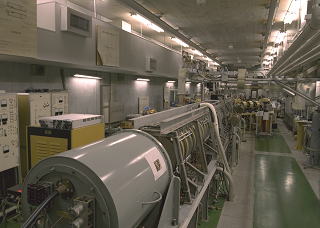 |
|
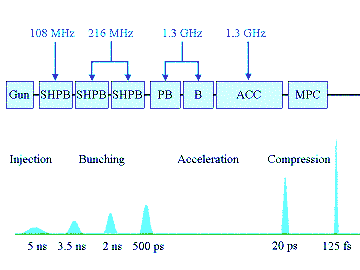 |
|
| S-band Laser Photocathode RF Electron Linac |
 |
Co60 γ-ray irradiation facility The Co60 γ-ray irradiation facility has been equipped 3 types of Co60 γ-ray sources. Their activity ranging from 265.7 TBq to 6.281 TBq at April 1st in 2013. Two irradiation caves are available for the use of scientific researches. To date, this facility is used for study in the special fields, such as irradiation effects on materials and tissues,radiation induced polymerization, radiation damages on materials, radiation hazard on biological system and so on. |
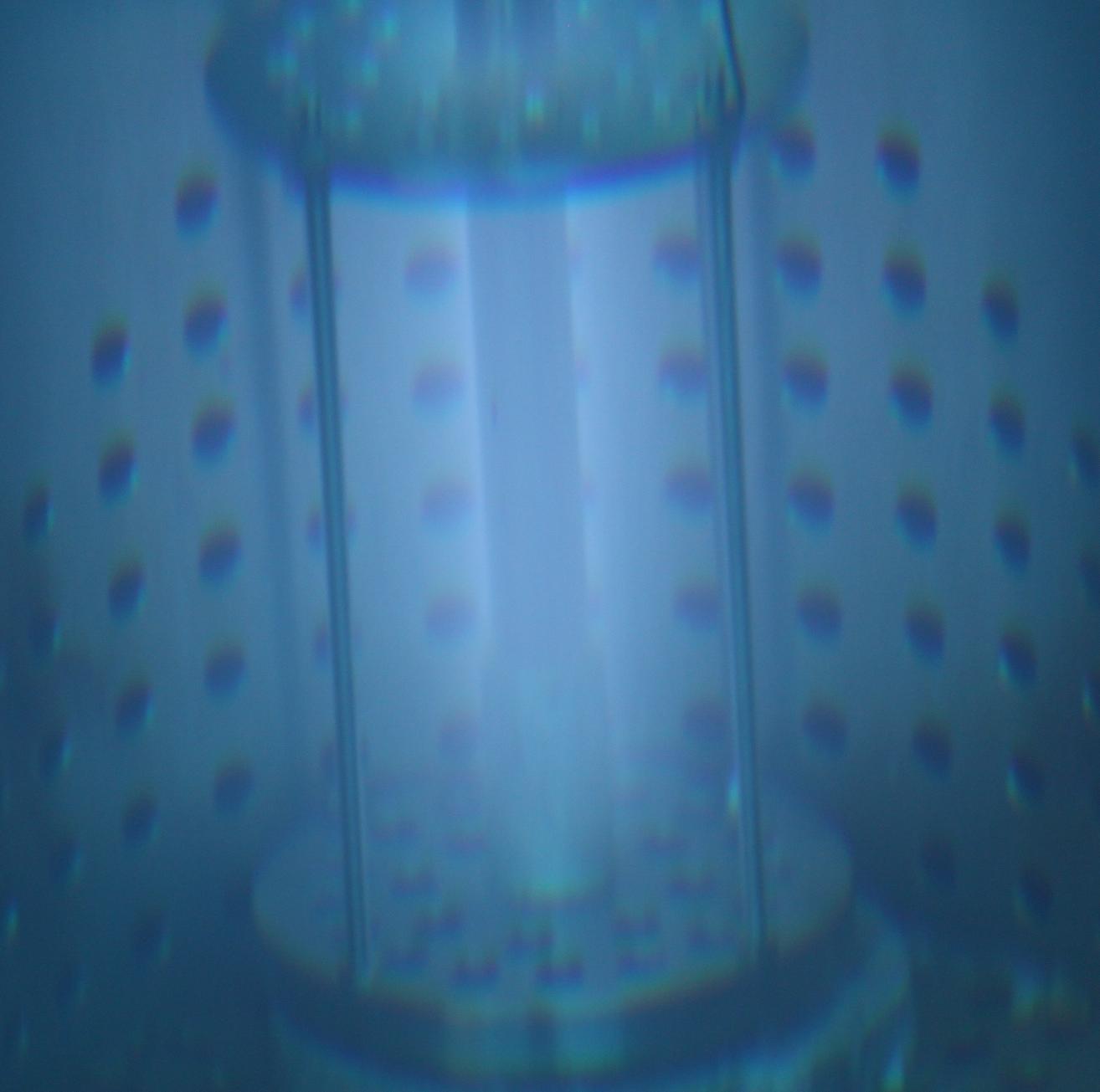 |
| Organization |
|---|
 |
| Members | |
|---|---|
| Director | |
| Professor | Tomonao Hosokai |
| Full-time members | |
| Research Laboratory for Quantum Beam Science | |
| Associate Professor | Toshiya Muto |
| Assistant Professor | Sachiko Tojo |
| Specially Appointed Associate Professor | Yoshihide Honda |
| Specially Appointed Researcher(Part-time) | Toshihiko Hori |
| Concurrent members | |
| Department of Advanced Nanofabrication | |
| Associate Professor | Jinfen Yang |
| Department of Material Excitation Chemistry | |
| Professor | Mamoru Fujitsuka |
| Associate Professor | Yasuko Osakada |
| Assistant Professor | LU CHAO |
| Department of Beam Materials Science | |
| Professor | Takahiro Kozawa |
| Associate Professor | Yusa Muroya |
| Assistant Professor | Kazumasa Okamoto |
| Department of Quantum Beam Physics | |
| Professor | Tomonao Hosokai |
| Associate Professor | Z.JIN |
| Associate Professor | Yanjun GU |
| Department of Complex Molecular Chemistry | |
| Assistant Professor | Yasunobu Yamashita |
| Technical Group | |
| Technical staff | Kazuya Furukawa |
| Technical staff | Yuhei Fukui |
| (as of Octber.2025) | |
| Progress |
|---|
| Progress (2020-2024)
|
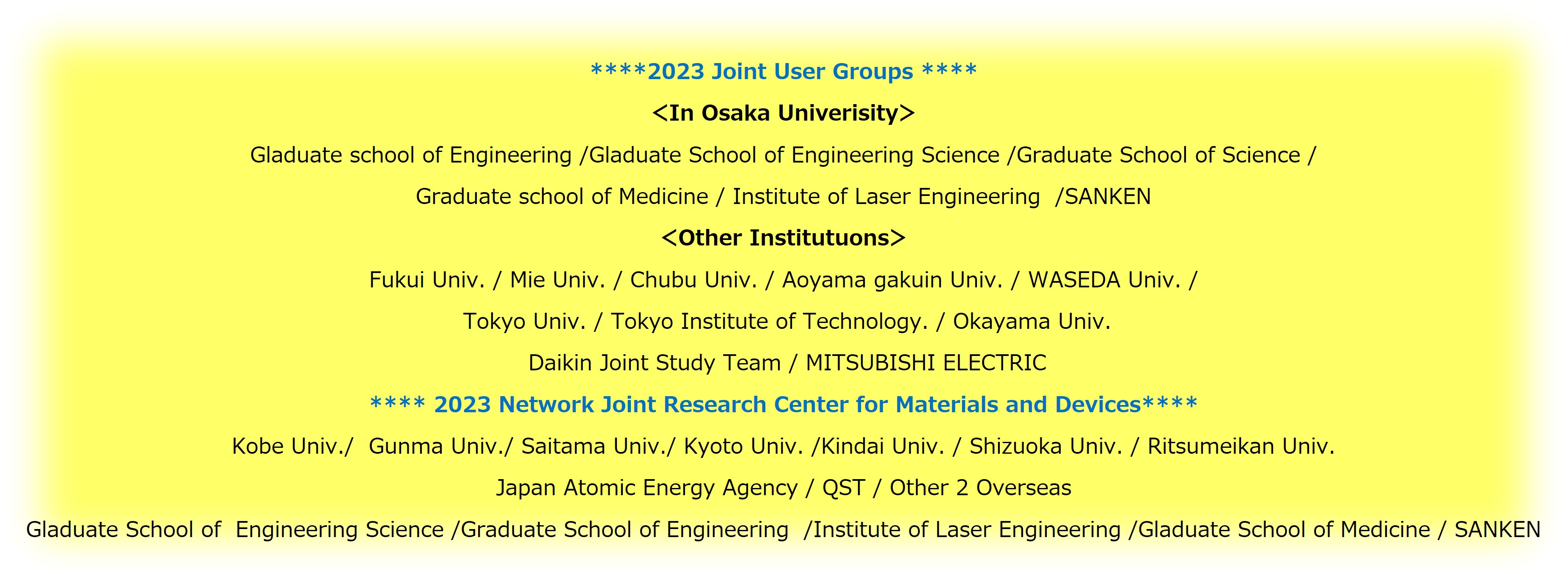 |
|---|
ADRESS |
Research Laboratory for Quantum Beam Science SANKEN, Osaka University 8-1 Mihogaoka, Ibaraki, Osaka 567-0047, Japan |
|---|---|
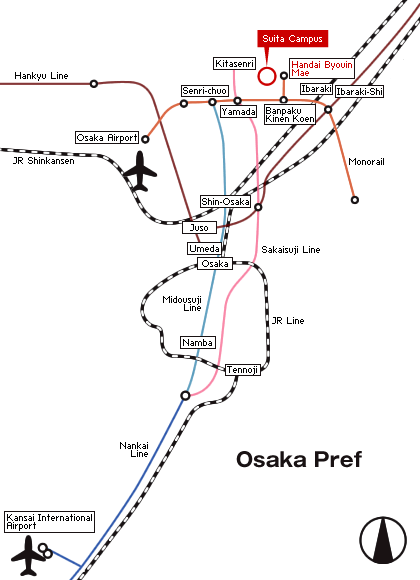
|
Suita Campus Map |